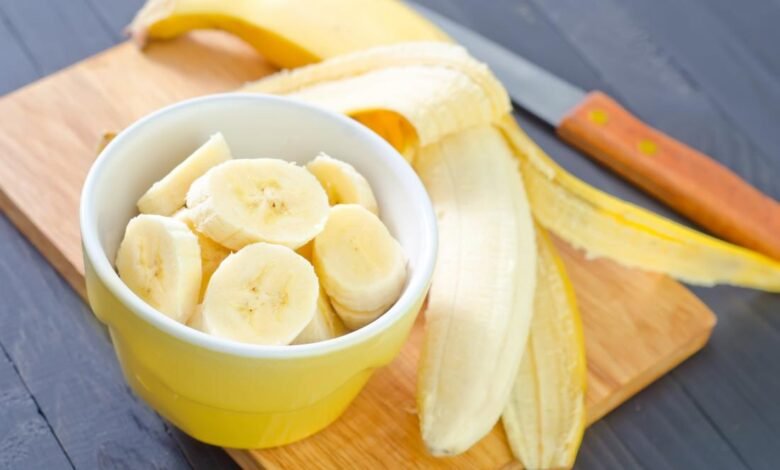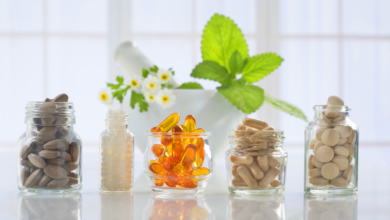Are Bananas Best for Diabetics

- Bananas are nutritious and contain carbohydrates, sugar, fiber, vitamins, and minerals
- The glycemic index and glycemic load of a banana might affect blood sugar levels depending on size and ripeness.
- Green, unripe bananas have resistant starch, which can improve insulin sensitivity and help regulate blood sugar.
- Portion size and food pairings are essential when including bananas in a diabetic diet.
- People with diabetes should monitor their carb intake and overall sugar consumption while enjoying bananas.
Introduction
Dealing with diabetes can be tough, right? This condition demands not just understanding the disease, but also knowing how food affects you. Ever wondered if bananas are good for folks with diabetes? In this article, we’ll dive into this topic and give you fact-based insights. These may be useful in making your dietary decisions.
Nutritional components of bananas
Bananas pack many nutrients, and each is supposed to have health perks. But what are they? These include carbohydrates, sugar, fiber, vitamins, and minerals. Let’s delve into these aspects:
1. Carbohydrates
A mid-sized banana (around 126 grams) has about 29 grams of carbs. Carbs fuel our bodies, so they’re a vital part of our diet.
2. Sugar content
One medium banana has about 15 grams of sugar. This is why bananas taste sweet. People with diabetes should keep an eye on the amount of sugar they take through their diet. Thus, the sugar from bananas must be watched as it may influence blood sugar levels.
3. Fiber
Dietary fiber does not break down in the body which helps in slow digestion and absorption of carbohydrates therefore reducing the incidence of blood sugar spikes. A medium-sized banana offers 3 grams of fiber, but it is important to be cautious of how many bananas are consumed as they contain sugar as well.
4. Vitamins and Minerals
Bananas bring key vitamins and minerals to the table. These include vitamin C, vitamin B6, potassium, and manganese, which contribute to your health.
5. Glycemic Index and Glycemic Load
The Glycemic Index (GI) ranks foods containing carbs based on how quick and large their effect is on blood sugar. With low-GI foods (55 or less), sugar enters the blood slowly, so no sharp spikes occur in blood sugar. Medium-GI foods have a score ranging from 56 to 69. While foods with high GI have a score that ranges from 70 to 100. The GI of bananas usually sits between low and mid. It ranges from 42 to 62. Its exact value seems to depend on how ripe the banana is. The GI increases with ripeness which is probably due to higher sugar and lower resistant starch content in ripe bananas.
6. Calorie content
A mid-sized banana carries about 112 calories. Hence, people with diabetes need to factor in a banana’s calorie count in their daily meal plan.
How do the different components of bananas affect blood sugar?
Different nutrients in bananas seemingly have varying impacts on blood sugar. These are as follows:
1. Carbs raise blood sugar level
As noted earlier, a mid-sized banana provides 29 grams of carbs. Eating carbs can pump up your blood sugar level.
2. Role of fiber in managing blood sugar
As mentioned above fiber can help slow the digestion and absorption of carbs. It plays a key role in controlling blood sugar. A medium banana gives 3 grams of fiber. This is proposed to contribute to it’s overall low-to-mid glycemic index.
3. Resistant starch in green (unripe) bananas
Green bananas are supposed to be low on sugar and more of what’s called resistant starch. This starch behaves like fiber. It doesn’t boost blood sugar levels much. Plus, it is proposed to offer other health benefits. For instance, it may better insulin sensitivity and manage blood sugar well.
4. Ripeness and its effect on blood sugar level
As described above it is seen that as bananas ripen, their sugar content soars and resistant starch declines. Fully ripe bananas have a higher GI. They raise blood sugar faster than green, less ripe bananas. Thus, patients having diabetes may be advised to choose green or slightly ripe bananas over fully ripe ones.
5. Importance of portion size
It is common knowledge that a patient with diabetes must watch portion sizes. Eating larger bananas means taking in more carbs and sugar. This will likely have a bigger impact on blood sugar levels. So, it would be wiser to pick smaller bananas. Also, it would be beneficial if one kept tabs on their total day’s intake of carbs and sugar (calories).
Are Bananas Safe for People with Diabetes?
Can folks on medication for diabetes safely eat bananas? This hinges on many factors like portion size, ripeness, and overall diet habits. While bananas do hold carbs and sugar that may drive up blood sugar, their fiber plus low-to-mid glycemic index could help diabetics. The key is moderate banana intake. However, the benefits need to be supported by more research.
Health benefits for diabetics
Banana consumption potentially seems to offer a range of benefits for diabetes patients which are as follows:
1. Heart health
Bananas are abundant in heart-friendly nutrients like potassium and fiber. Potassium regulates fluid balance and blood pressure. Fiber (especially green bananas) aids in digestion and may potentially reduce heart disease risk.
2. Improved insulin sensitivity
As mentioned before, resistant starch in green bananas may improve insulin sensitivity. This may aid blood sugar management in type 2 diabetes patients.

3. Blood sugar regulation
The fiber in bananas assists in slowing down the digestion and absorption of carbs. This seems to help control blood sugar.
4. Possible risks
Eating bananas can also pose certain risks for diabetes patients which are as follows:
5. Too much sugar
Bananas contain sugar. If you eat a lot of bananas, it could spike your blood sugar. Patients having diabetes should watch their sugar intake from bananas and other foods as well.
6. Excess carb intake
Bananas have carbs, part of which are sugars. Thus, it’s crucial for patients with diabetes to keep track of their total carb intake. That also includes what comes from bananas.
7. Allergic reactions
Banana allergy though rare is well established, more so in individuals who suffer from other allergies like asthma, atopic dermatitis, etc. Symptoms can include itching, swelling, and trouble breathing. If you think you’re allergic to bananas, talk to your healthcare provider.
Whilst knowing the pros and cons of adding bananas to your diet, if you are a diagnosed patient of diabetes mellitus or in the prediabetic range always consult with your health care provider before making any changes to your daily diet.
The below table points to the upsides and downsides of eating bananas as a diabetic:
| Benefits & Risks | Impact on Diabetics |
| Benefits | Details |
| Heart health | Potassium and fiber support heart health |
| Improved insulin sensitivity | Resistant starch helps regulate blood sugar levels |
| Regulating blood sugar | Fiber helps slow digestion and absorption |
| Risks | Details |
| Too much sugar | Excessive sugar consumption can raise blood sugar levels |
| Carb intake | Monitoring total carbohydrate intake is crucial |
| Allergic reactions | Consult your healthcare provider if you suspect an allergy |
Including Bananas in a Diabetes Diet
With the right planning, and mindful attention to serving sizes, bananas may be healthily fit into a diabetic diet:
1. Pairing with a healthy fat or protein source
To slow the digestion and absorption of sugar, pair bananas with a healthy fat or protein. Go for nuts, seeds, or yogurt.
2. Eating underripe bananas
Opting for green, less ripe bananas might help minimize their effect on blood sugar. As described above these bananas bring more resistant starch and less sugar.
3. Choosing smaller bananas
Select smaller bananas to curb your total intake of carbs and sugar. This will limit their effect on your blood sugar.
4. Monitoring daily carb intake
Keep an eye on your daily intake of carbs. This ensures that you stay within your personal target range.
5. Alternative fruit options
If bananas worsen your blood sugar, consider other low-glycemic fruits like berries, cherries, or apples.
Remember that adding bananas to a healthy, balanced diabetic diet can give many health perks. The secret? Eat them in moderation watch portion sizes and always keep your healthcare provider in the loop before making the changes
Here are some handy tips on including bananas in a diabetes-friendly diet:
| Tips for Including Bananas in Diabetic Diet | |
| Pair with healthy fats or protein | slows digestion, absorption of sugar |
| Eat underripe bananas | higher in resistant starch, lower in sugar |
| Choose small bananas | less carbohydrate and sugar intake |
| Monitor daily carbohydrate intake | ensures you stay within the individual target range |
| Alternatives to bananas | If adding bananas the blood sugar worsen, then look to incorporate berries, cherries, or apples instead. |
Who Should Avoid Bananas?
Diabetes with other health risks
While many people with diabetes can relish bananas, some must avoid or limit bananas because of other health risks:
Kidney disease
Those with chronic kidney disease may need to limit potassium-rich foods like bananas. Eating too much of these can lead to blood potassium build-up. Always discuss this with your healthcare provider.
Certain medications
People on certain drugs for high blood pressure or other issues should ask their healthcare provider before eating lots of potassium-rich foods like bananas. This could lead to unwanted side effects.
Here’s the rundown on who should skip bananas:
| Who Should Avoid Bananas? | Reason |
| Diabetics with kidney disease | High potassium levels could cause complications |
| Those on certain medications | Potassium-rich foods can interact with some medications |
Conclusion
Wrapping up, bananas can be healthy for diabetes patients when eaten in moderation and with a keen eye on portion sizes, ripeness, and daily carb intake. By using the tips in this blog and consulting with your healthcare provider, you can safely eat bananas as part of a balanced, diabetes-friendly diet.
Don’t forget the key to effective diabetes management is a balanced diet and staying active. If you have concerns or queries about your diet or diabetes control, always ask your healthcare provider for guidance and suggestions.
Also read: https://www.healthevoke.com/10-incredible-health-benefits-of-lemon/








One Comment